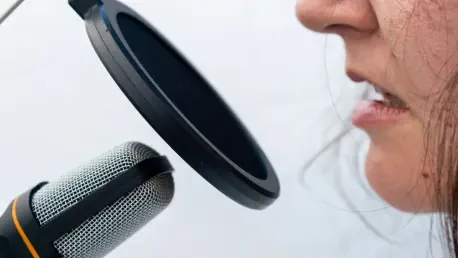As we delve into the intersection of healthcare and cutting-edge technology, I’m thrilled to introduce James Maitland, a renowned expert in robotics and IoT applications in medicine. With a deep passion for harnessing technology to transform healthcare, James brings a unique perspective on how innovations like AI are reshaping personal health journeys. Today, we’re exploring the remarkable story of a cancer survivor who used AI to reclaim her voice after losing it to invasive oral cancer. Our conversation touches on the emotional weight of losing one’s voice, the power of preserving personal identity through technology, the challenges of navigating outdated medical systems, and the profound impact of AI-driven solutions in restoring communication and dignity.
Can you share your insights on why the human voice is so central to personal identity, especially in the context of someone facing a life-altering diagnosis like cancer?
Absolutely, Chloe. The voice isn’t just a tool for communication; it’s a fingerprint of who we are—our emotions, our history, and our personality all come through in how we sound. For someone diagnosed with a condition like oral cancer, where the loss of voice is a real possibility, it can feel like losing a core part of yourself. I’ve worked with patients and tech developers who emphasize how much intonation, accent, and even humor define our interactions. When that’s taken away, it’s not just about not being able to speak—it’s about not being fully recognized as the person you are. That’s why technologies that preserve or replicate a voice are so vital; they help maintain that human connection.
How does the process of voice banking work, and what makes it such a powerful tool for patients facing surgeries that might silence them?
Voice banking is essentially recording a person’s speech before they lose the ability to speak naturally, often due to surgeries like a laryngectomy. Patients might record everyday phrases, personal messages, or even read books aloud to capture a wide range of their vocal patterns. These recordings are then used by AI systems to train algorithms that can mimic their unique voice—down to the cadence and emotion. It’s powerful because it gives patients a chance to hold onto their identity and communicate in a way that feels authentic, even after such a profound physical change. It’s not just about words; it’s about preserving memories and relationships through sound.
What are some of the emotional challenges patients face when they can no longer speak with their natural voice, and how does that impact their daily lives?
The emotional toll is immense. Imagine not being able to express joy, frustration, or love in the way you always have. Patients often describe a sense of isolation because others can’t hear their true personality anymore. It affects how they’re perceived—people might assume they’re less capable or less engaged, which can be deeply frustrating. In daily life, simple interactions like ordering coffee or talking to a doctor become hurdles. There’s also a grieving process for the loss of something so personal. I’ve seen cases where this leads to withdrawal or even depression if there’s no adequate replacement for that mode of expression.
How have older voice technologies, like the electrolarynx, fallen short for patients, and what gaps have they left in communication?
Older technologies like the electrolarynx, which is a device held against the throat to produce sound, often result in a very mechanical, monotone voice. While it’s functional for basic communication, it lacks the nuance of human speech—no emotion, no inflection, just a robotic buzz. For patients who’ve also lost their tongue, shaping words becomes nearly impossible, making it even harder to be understood. This can lead to misunderstandings or people simply tuning out, which is incredibly isolating. These tools, while groundbreaking in their time, don’t bridge the gap of conveying personality or fostering genuine connection, leaving patients feeling unheard in a deeper sense.
What excites you most about the advancements in AI voice replication technology, and how does it differ from those earlier solutions?
What’s thrilling about AI voice replication is its ability to recreate a person’s natural voice with stunning accuracy. Unlike older synthetic voices that sounded flat, AI can analyze hours of recordings to capture unique traits—think accents, pacing, even a sarcastic tone. It uses generative algorithms to synthesize speech that feels alive, not robotic. I’ve seen firsthand how patients light up when they hear their recreated voice; it’s like reclaiming a piece of themselves. This tech doesn’t just help them speak—it helps them be recognized as who they are, which is a game-changer in maintaining relationships and emotional well-being.
Can you explain the barriers patients often face with insurance coverage for AI voice technologies, and why this is such a critical issue?
Insurance coverage is a huge hurdle. Many health plans prioritize life-saving treatments over quality-of-life solutions, and AI voice tech often falls into the latter category in their eyes. It’s frequently seen as experimental or non-essential, despite clear evidence of its impact on mental health and communication. Patients end up paying out of pocket—sometimes thousands of dollars initially, plus monthly fees—which isn’t feasible for everyone. This is critical because having a voice isn’t a luxury; it’s tied to dignity, social inclusion, and even medical outcomes, as effective communication with healthcare providers can influence care quality.
How does having a natural-sounding AI voice impact a patient’s interactions with medical professionals during ongoing treatment?
It makes a world of difference. When a patient uses a natural-sounding AI voice, medical staff are more likely to engage with them as a whole person, not just a case. A robotic voice can unintentionally create distance—people might subconsciously disengage or misjudge the patient’s comprehension. But with a voice that carries emotion and clarity, there’s a seamless dialogue. Patients can advocate for themselves, ask detailed questions, and build trust with their care team. I’ve heard stories where this tech allowed patients to actively shape their treatment plans, especially during tough moments like cancer recurrence, which is invaluable.
What role do you think advocacy and research will play in making AI voice technology more accessible to patients in the future?
Advocacy and research are key to breaking down barriers. Patient stories and clinical trials can demonstrate the tangible benefits—improved mental health, better medical communication, and longer, fuller lives. This data can push insurers to reconsider coverage by showing the actuarial value, much like what happened with breast reconstruction decades ago. Advocacy from patients and professionals also raises awareness among doctors and speech therapists, many of whom don’t yet know these tools exist. I believe combining personal narratives with hard evidence will drive policy changes and make this tech a standard part of care for those who need it.
What is your forecast for the future of AI in healthcare, particularly in areas like voice restoration and personalized patient support?
I’m incredibly optimistic. AI in healthcare is on the cusp of a revolution, especially in personalized solutions like voice restoration. In the next decade, I expect we’ll see even more refined algorithms that can recreate voices from minimal recordings—maybe just a few minutes of audio. Beyond voice, AI will likely expand into tailored emotional support, using IoT devices to monitor and respond to patients’ needs in real time. Accessibility will improve as costs drop and integration into standard medical protocols becomes the norm. My hope is that these tools become as commonplace as prosthetics, ensuring no one is left without a way to express who they are, no matter the challenge they face.









